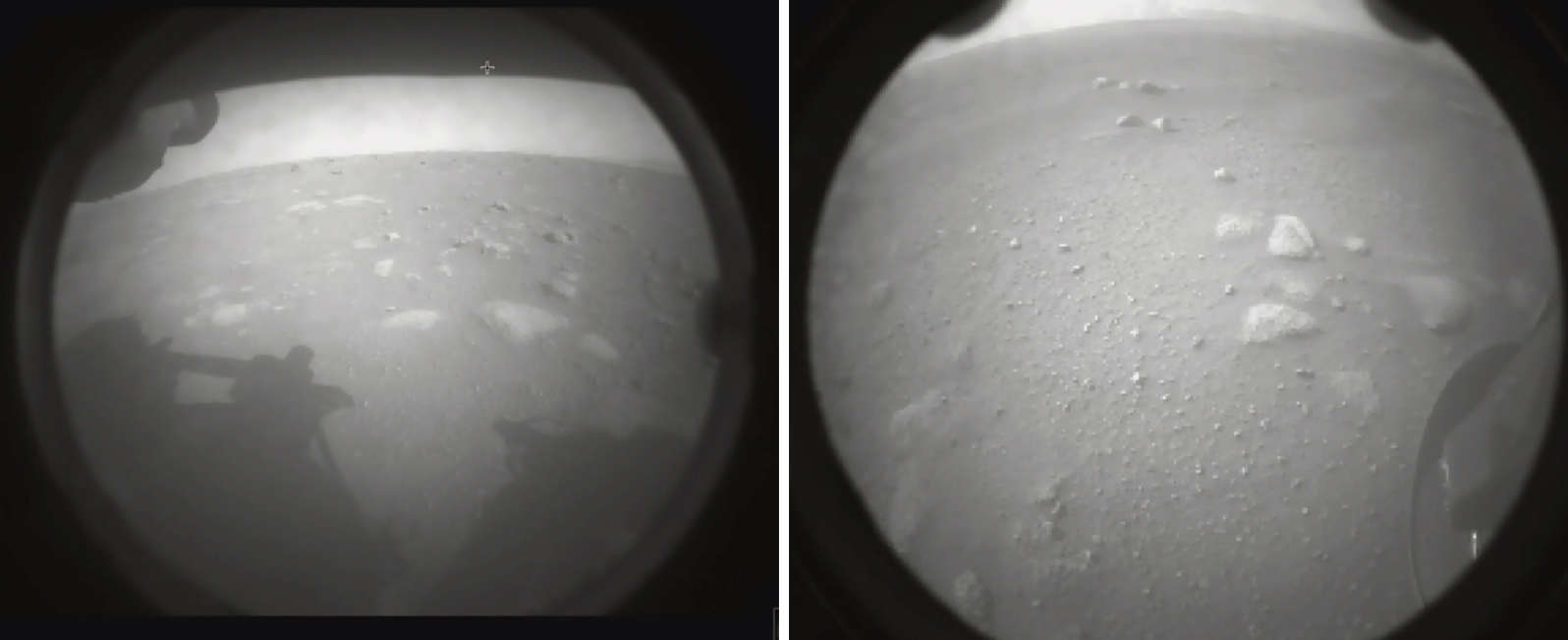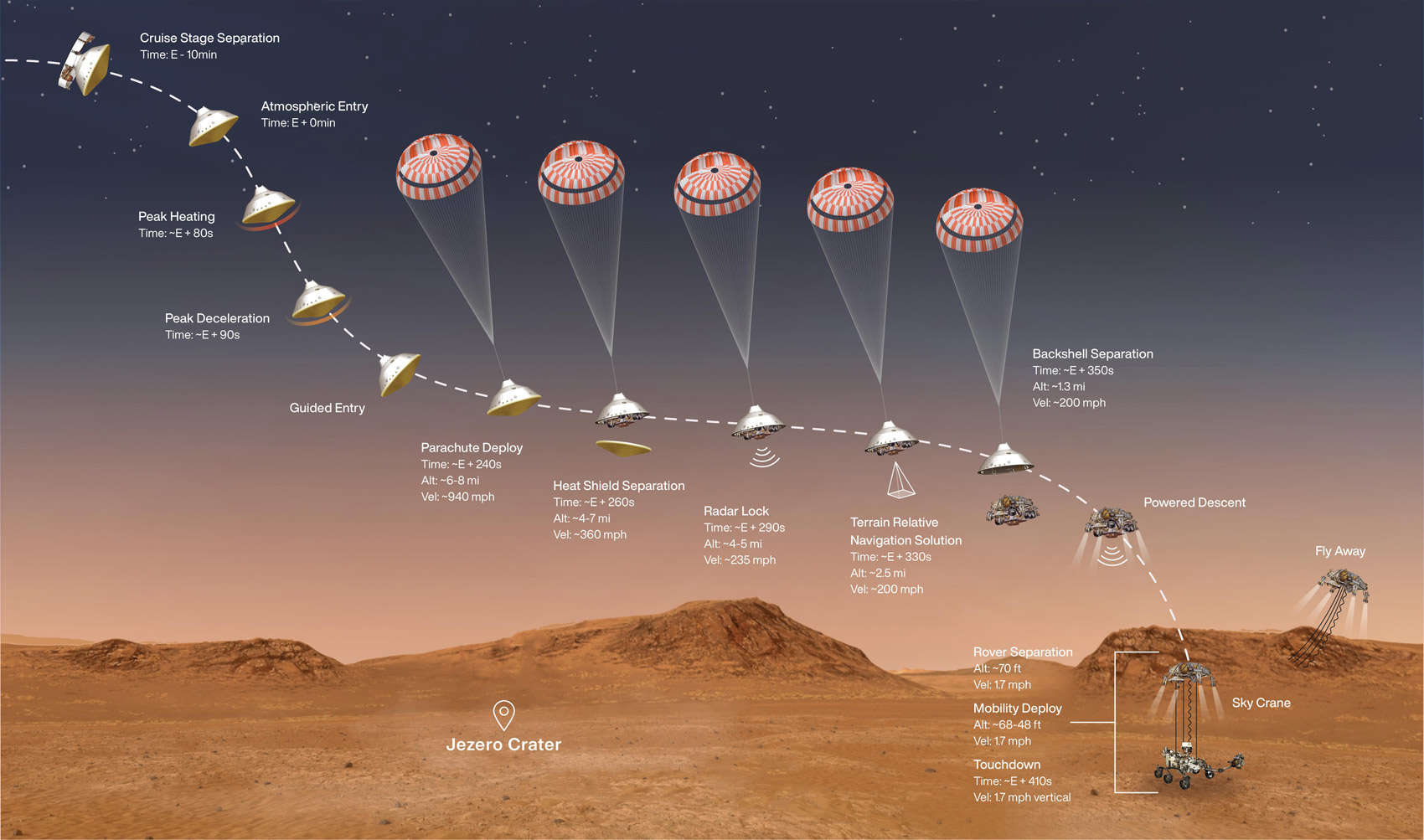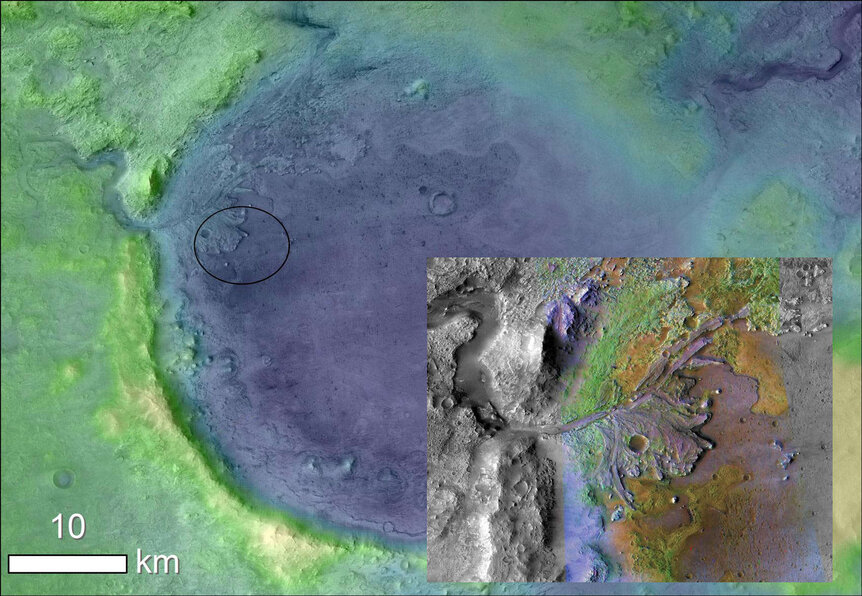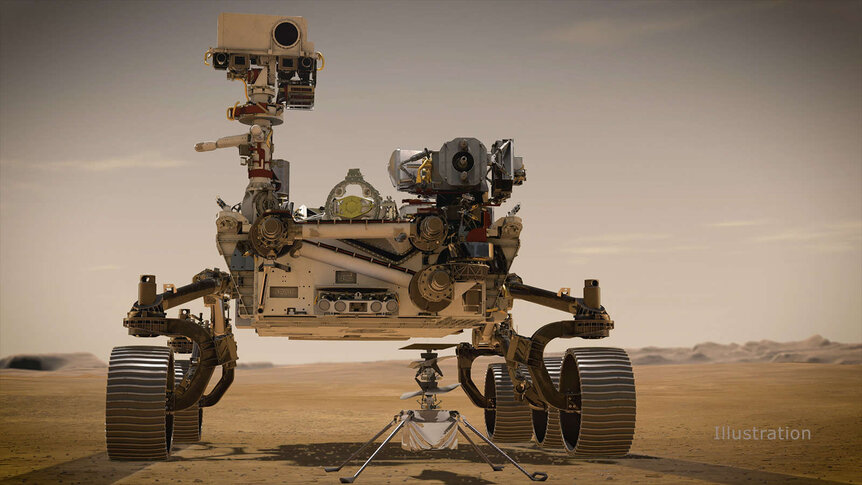Create a free profile to get unlimited access to exclusive videos, sweepstakes, and more!
Perseverance lands on Mars today! Here's what you need to know
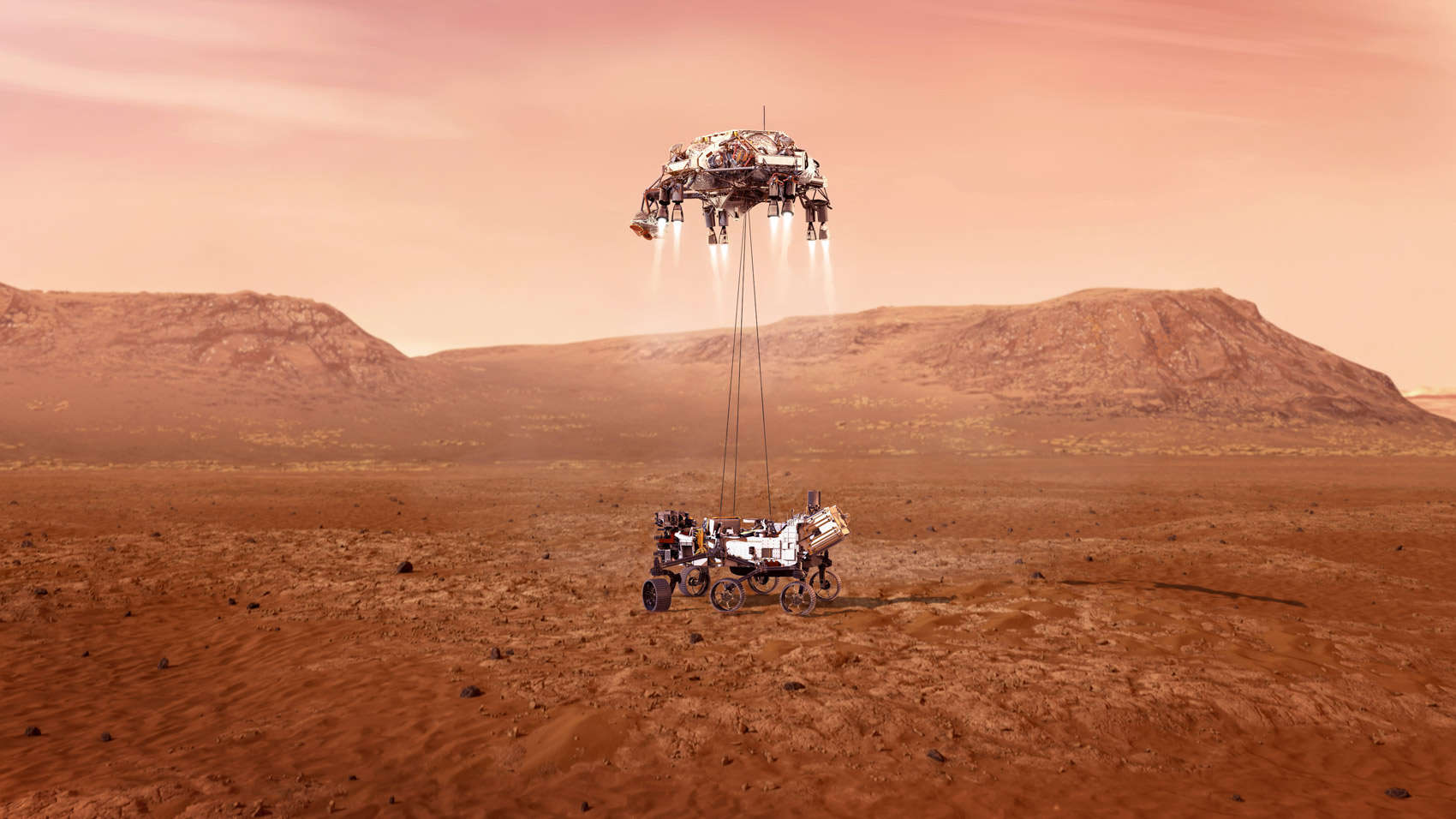
Today, February 18, 2021 at 20:44 UTC (3:44 p.m. Eastern US time), if all goes well, another robotic rover will land on the planet Mars.
But we won't know if it worked until 20:55 UTC (3:55 p.m. Eastern), because it takes 11 minutes and 22 seconds for the radio signal to travel the 200+ million kilometers from Mars to Earth. Hopefully, at that time we will find out that the rover Perseverance has safely, if terrifyingly, set down on another world.
[UPDATE (February 18, 20101 at 21:15 UTC): PERSEVERANCE IS DOWN SAFELY ON MARS! It was a picture-perfect descent and landing. In fact, almost immediately images were returned from the hazard camera showing the area around it:
I grabbed these off my screen from the NASA live feed, and we should be getting higher resolution version later. We're also awaiting to see just where it landed in Jezero crater, but it looks like it wasn't far from the center of the landing ellipse, the "bulls-eye" spot they were aiming for.
My absolutely ecstatic and sinscere congratulations to everyone working on this amazing mission, from the concept to the working rover on the surface of another world. Now lets go look for Martians!]
Perseverance will be the fifth rover NASA has sent to Mars, after Sojourner, Opportunity, Spirit, and Curiosity. They all tested out technology and had various scientific missions, but Perseverance is the first that is specifically designed to look for signs of ancient life on the Red Planet.
Launched on July 30, 2020 during a favorable time when Mars and Earth were in good orbital positions, Perseverance took over 200 days to travel the 470 million km curved path between the two worlds. After all that time, there will be just seven minutes separating it from space and the surface of Mars.
Those seven minutes are called the Entry, Descent, and Landing stage of the mission, or more colloquially as the Seven Minutes of Terror (which you can see for yourself in this great interactive simulation from NASA).
After the cruise stage (the hardware that supported the rover during the journey to Mars) separates, the flying-saucer-shaped descent stage will ram its way through the atmosphere for six minutes, slowing from a staggering 20,000 kilometers per hour to just about 1,500 kph. Then the parachute will deploy, specially designed to work at supersonic speeds. It's huge, nearly 22 meters across, larger than any 'chute ever used before on a Mars mission; Perseverance is heavier than Curiosity, and the load on the parachute is larger.
Then the heat shield separates, and a new Terrain Relative Navigation System will be used to find a safe spot to touch down, matching what's under the spacecraft to terrain data obtained by previous missions stored onboard.
About a minute before landing and still over 2 km up, the backshell and parachute separate, and the rocket-powered sky crane — yes, rocket-powered sky crane — will engage a powered descent to the surface. 25 meters above Mars the crane will lower the rover via cables, and when the wheels touch down it will trigger sensors that disengage the cables, and the crane will fly safely away to crash land far from the rover.
At that point, Perseverance will be on Mars… and its real mission can begin.
At first it will do a system checkout, including taking images of the area around it. It will land in Jezero Crater, an ancient impact feature about 50 kilometers across. Surveys from orbit show the presence of phyllosilicates — clays — there, indicating Jezero was once the location of a lot of water. At the northeast corner this is pretty obvious: There's a huge triangle-shaped sediment deposit there, silt dumped from a river that once flowed into the crater.
This makes Jezero a fantastic place to look for evidence that life once thrived on Mars. There could be fossilized microbes there, or just the chemical traces that life once absorbed energy and nutrients and left behind things excreted.
As it roves around the crater taking images and making chemical analyses, it will also collect samples of the surface deemed particularly interesting to scientists back on Earth. The rover will then carefully bottle them up, store them, and bring them to a suitable place for a still-planned return mission to gather them up and take them to Earth. Perseverance is a capable mobile chemistry lab, but what we have here on Earth is far more sophisticated, and the samples can be studied much more carefully here. Plus, future innovations in tech could enable better analysis as well.
Not only that, but under Perseverance's belly is a helicopter. Called Ingenuity, it doesn't have scientific instruments on it. Instead it's an engineering testbed, designed to try out new flying tech on Mars. It has a mass of less than two kilograms (4 pounds) and will hopefully fly 5 times or so over the course of a month. If successful, it will pave the way for bigger and more capable drones in the future, which can travel farther and faster than rovers, and get more detailed in situ data of the landscape.
There are also two microphones on the rover. One will record the sounds of the entry, descent, and landing, and the other is mounted on the rover's "head," next to the SuperCam, which will listen as a powerful laser pewpews rocks, vaporizing them so that it can take spectra of rocks and learn what they're composed of.
This will be an amazing mission, as they all have been. Its nominal duration is one Mars year — 687 days, nearly two Earth years — but JPL tends to engineer their hardware to last a lot longer. We can hope.
If you want to watch the fun live and learn more, you have options:
- NASA TV of course will be carrying it, and the NASA rover landing page has a lot more links with events (including their first Spanish-language landing show)
- The good folks at The Planetary Society are holding a live event with lots of experts to celebrate the landing.
- The National Air and Space Museum has an info page and a press release with program activities they have for the event.
- You can follow NASA's official Perseverance rover Twitter feed, as well as the very-much-not-official Percy the Mars Rover feed for a more sarcastic and snarky experience.
- My friend Emily Lakdawalla also has a lot of cool links and info.
I'll be watching this live and tweeting about it too. I'm pretty excited. It's not every day we land a one-ton nuclear-powered laser-eyed helicopter-bearing mobile sample-collecting chemistry lab on another planet. But today is one of those days.
